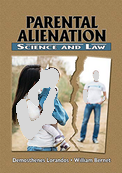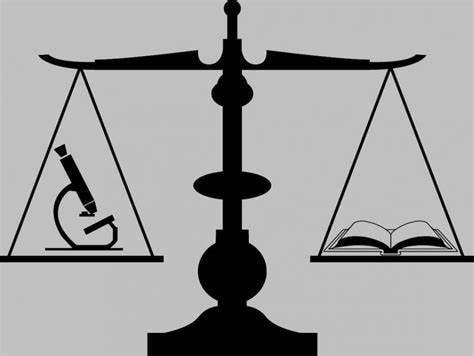Let Truth Be Known!
Those who reject the scientifically researched basis of parental alienation claim that there is no research validity to PA. You will find two valuable resources below. The first is an online database of over 1,000 books, book chapters, and articles published in mental health or legal professional journals. The second is a magnus opus book that enumerates upon the salient scientific and legal validity of PA.
Those who reject the scientifically researched basis of parental alienation claim that there is no research validity to PA. You will find two valuable resources below. The first is an online database of over 1,000 books, book chapters, and articles published in mental health or legal professional journals. The second is a magnus opus book that enumerates upon the salient scientific and legal validity of PA.
SEE THE LATEST STUDY ABOUT THE SCIENTIFIC STATUS OF PA:
Developmental Psychology and the Scientific Status of Parental Alienation
Developmental Psychology and the Scientific Status of Parental Alienation

Parental Alienation Database
A large bibliography regarding parental alienation has been jointly developed by PASG and the Eskind Biomedical Library of Vanderbilt University Medical Center.
This database contains more than 1,000 books, book chapters, and articles published in mental health or legal professional journals. Most of these references pertain directly to parental alienation and parental alienation syndrome; some of the references pertain to a closely related topic such as divorce, child custody, parenting time, or sexual abuse. Newspaper and magazine articles and unpublished presentations at professional meetings are not included, unless they are unusually important.
The most robust topic in this database is qualitative and quantitative research regarding parental alienation and parental alienation syndrome. Qualitative or descriptive research refers to scores of professional articles and book chapters – usually by mental health professionals – that document the phenomenon of parental alienation. There are important, but fewer, references regarding quantitative research. Clinicians and researchers have published material on the prevention of parental alienation. There have also been important articles, chapters, and books on the treatment of parental alienation.
In order to provide a comprehensive resource, this database includes criticisms of parental alienation and parental alienation syndrome. The most vivid accounts of parental alienation are books written by rejected parents who relate in detail the events in their own families. The international scope of parental alienation is reflected by references in this database from 35 countries on six continents.
Access this Parental Alienation Database at https://ckm.vumc.org/pasg.
PARENTAL ALIENATION: SCIENCE AND LAW
By Demosthenes Lorandos, William Bernet
Parental Alienation – Science and Law explains the research that creates the foundation for the assessment, identification, and intervention in cases of parental alienation (PA). For attorneys, judges, and family law professionals, this book explains in detail the scientific basis for testimony and legal decisions that relate to PA. There are two complementary features for most of the chapters. First, the chapter authors address how evidence regarding PA meets the criteria of the Frye, Daubert, and Mohan cases as well as the Federal Rules of Evidence for testimony by experts. The second feature is to refute common misinformation. There is debate and disagreement about some aspects of PA theory. The editors of this book are concerned that some of the discourse regarding PA has spun out of control, into pervasive misinformation. This book provides plenty of evidence for overcoming that hurdle. The editors of this book and the chapter authors have extensive experience with both clinical and legal aspects of divorce, child custody, parenting time evaluations, PA, and related topics. The editors and chapter authors include six psychologists, three physicians, two social workers, four attorneys, and one judge. Collectively, these mental health professionals have testified as expert witnesses hundreds of times regarding family law topics. As an additional feature, the book contains four appendices and three indexes. Appendix A defines the concepts used in this book, so that the chapter authors and readers will use terminology in a consistent manner. Appendix B lists more than one thousand trial and appellate cases in the U.S. involving PA, organized by state. Appendix C presents twenty rather dramatic vignettes involving PA. Finally, Appendix D, “Sample Motion and Brief for Extended Voir Dire,” provides a motion and supporting brief asking the court to allow extended time to examine the competency of a proposed expert.
Table of Contents
Preface
Section One: Clinical Considerations and Research
1. Introduction to Parental Alienation
2. The Psychosocial Assessment of Contact Refusal
3. Parental Alienating Behaviors
4. Parental Alienation: How to Prevent, Manage, and Remedy It
5. Parental Alienation and Empirical Research
6. Recognition of Parental Alienation by Professional Organizations
Section Two: Legal Issues
7. Alienating Behaviors and the Law
8. Admissibility of the Construct–Parental Alienation
9. Parental Alienation in U.S. Courts, 1985 to 2018
10. The Importance of Voir Dire in High-Conflict Family Law Cases
11. Parental Alienation: An International Perspective
12. Tips for Expert Testimony
13. Public Policy Initiatives Related to Parental Alienation
Appendices
A. Parental Alienation Terminology and Definitions
B. Parental Alienation in U.S. Courts, 1985 to 2018
C. Cases Illustrative of Alienating Behaviors
D. Sample Motion and Brief for Extended Voir Dire
Name Index
Subject Index
List of Cases Index
A large bibliography regarding parental alienation has been jointly developed by PASG and the Eskind Biomedical Library of Vanderbilt University Medical Center.
This database contains more than 1,000 books, book chapters, and articles published in mental health or legal professional journals. Most of these references pertain directly to parental alienation and parental alienation syndrome; some of the references pertain to a closely related topic such as divorce, child custody, parenting time, or sexual abuse. Newspaper and magazine articles and unpublished presentations at professional meetings are not included, unless they are unusually important.
The most robust topic in this database is qualitative and quantitative research regarding parental alienation and parental alienation syndrome. Qualitative or descriptive research refers to scores of professional articles and book chapters – usually by mental health professionals – that document the phenomenon of parental alienation. There are important, but fewer, references regarding quantitative research. Clinicians and researchers have published material on the prevention of parental alienation. There have also been important articles, chapters, and books on the treatment of parental alienation.
In order to provide a comprehensive resource, this database includes criticisms of parental alienation and parental alienation syndrome. The most vivid accounts of parental alienation are books written by rejected parents who relate in detail the events in their own families. The international scope of parental alienation is reflected by references in this database from 35 countries on six continents.
Access this Parental Alienation Database at https://ckm.vumc.org/pasg.
PARENTAL ALIENATION: SCIENCE AND LAW
By Demosthenes Lorandos, William Bernet
Parental Alienation – Science and Law explains the research that creates the foundation for the assessment, identification, and intervention in cases of parental alienation (PA). For attorneys, judges, and family law professionals, this book explains in detail the scientific basis for testimony and legal decisions that relate to PA. There are two complementary features for most of the chapters. First, the chapter authors address how evidence regarding PA meets the criteria of the Frye, Daubert, and Mohan cases as well as the Federal Rules of Evidence for testimony by experts. The second feature is to refute common misinformation. There is debate and disagreement about some aspects of PA theory. The editors of this book are concerned that some of the discourse regarding PA has spun out of control, into pervasive misinformation. This book provides plenty of evidence for overcoming that hurdle. The editors of this book and the chapter authors have extensive experience with both clinical and legal aspects of divorce, child custody, parenting time evaluations, PA, and related topics. The editors and chapter authors include six psychologists, three physicians, two social workers, four attorneys, and one judge. Collectively, these mental health professionals have testified as expert witnesses hundreds of times regarding family law topics. As an additional feature, the book contains four appendices and three indexes. Appendix A defines the concepts used in this book, so that the chapter authors and readers will use terminology in a consistent manner. Appendix B lists more than one thousand trial and appellate cases in the U.S. involving PA, organized by state. Appendix C presents twenty rather dramatic vignettes involving PA. Finally, Appendix D, “Sample Motion and Brief for Extended Voir Dire,” provides a motion and supporting brief asking the court to allow extended time to examine the competency of a proposed expert.
Table of Contents
Preface
Section One: Clinical Considerations and Research
1. Introduction to Parental Alienation
2. The Psychosocial Assessment of Contact Refusal
3. Parental Alienating Behaviors
4. Parental Alienation: How to Prevent, Manage, and Remedy It
5. Parental Alienation and Empirical Research
6. Recognition of Parental Alienation by Professional Organizations
Section Two: Legal Issues
7. Alienating Behaviors and the Law
8. Admissibility of the Construct–Parental Alienation
9. Parental Alienation in U.S. Courts, 1985 to 2018
10. The Importance of Voir Dire in High-Conflict Family Law Cases
11. Parental Alienation: An International Perspective
12. Tips for Expert Testimony
13. Public Policy Initiatives Related to Parental Alienation
Appendices
A. Parental Alienation Terminology and Definitions
B. Parental Alienation in U.S. Courts, 1985 to 2018
C. Cases Illustrative of Alienating Behaviors
D. Sample Motion and Brief for Extended Voir Dire
Name Index
Subject Index
List of Cases Index

